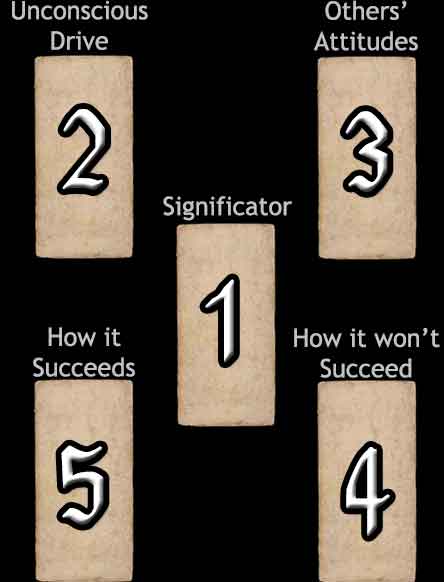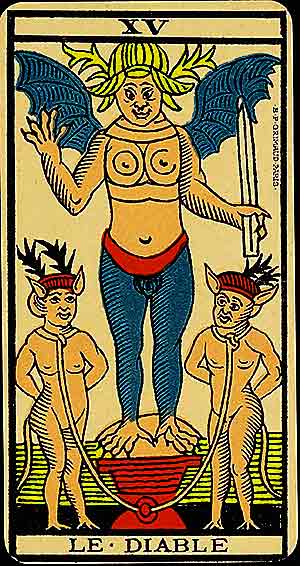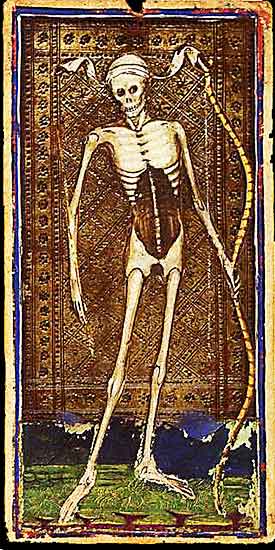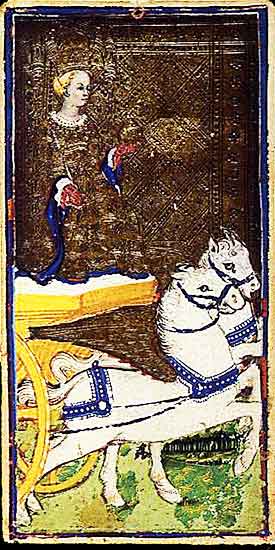Game Plan Spread

Difficulty: Easy
When a person has a certain plan in mind, this simple five-card spread presents a choice, hinting at what action or attitude should be taken for their plan to succeed, and what should be avoided to help the plan work out for the best.
The initial card is laid in the centre of the layout, the significator. The following four cards are laid out clockwise around the significator.
In this spread, the second card is about what drives the reader, but also says they are not fully conscious of this, perhaps even completely unaware of it. It provides a hint as to the reason they strive for their goal.
The third card uncovers what others think of the reader and their goals. The reader may or may not be aware of this. Sometimes other people factor into the plans (and sometimes they don't).
The fourth card suggests what not to do. If things are permitted to go down this path, the plan will collapse.
The fifth card is a hint as to how to make this plan work out favourably. The idea this card presents should be followed to make the plan successful. It is the differences between Cards #4 & #5 that should be noted, as the differences provide important clues.
Your Game Plan Reading
Unconscious Drive XV – The Devil (Lost card, substituted here) |
External Influences XIII – Death |
|
Significator IX – The Hermit |
||
How it Will Succeed VII – The Chariot |
How it Will Not Succeed XI – Strength |

IX – The Hermit
The Hermit symbolises introspection, solitude, and the search for wisdom. He represents the retreat from worldly distractions to find enlightenment within.
Symbolism: The Hermit's lantern lights the way, symbolising inner guidance. His heavy robes and staff reflect humility and steadfastness, while the muted tones and golden accents emphasise the sacred nature of his solitary journey.
In Relationships: A period of introspection. The Hermit may suggest a need for space or reflection before moving forward.
In Work: Time to step back and assess your goals. The Hermit advises seeking clarity and wisdom before making decisions.
Spiritually: The Hermit represents the inner search for truth and enlightenment through meditation and solitude.
When ill-dignified: Isolation, withdrawal, or a refusal to seek help. It warns against becoming too introspective or disconnected.

XV – The Devil (Lost card, substituted here)
This card no longer exists, so the Marseille version is filling in. The Devil represents bondage, temptation, and the shadow self. It highlights the chains we impose upon ourselves through fear, obsession, or indulgence, urging us to confront these darker aspects to reclaim our freedom.
Symbolism: The Devil embodies primal instincts and the seduction of material or carnal desires. The chained figures symbolise voluntary entrapment, their loose bindings reminding us of the ability to escape our vices. The pedestal signifies false power, while the scene hints at the potential for redemption through self-awareness.
In Relationships: The Devil warns of unhealthy attachments, jealousy, or manipulative relationships. It challenges you to examine whether passion has turned into obsession.
In Work: This card can signify being trapped in a toxic work environment, greed, or overreliance on material success. It urges you to reflect on what fulfils you.
Spiritually: The Devil calls for self-awareness and shadow work. Confronting your inner fears or desires will lead to personal liberation.
When ill-dignified: When reversed or ill-dignified, the Devil signifies breaking free from constraints, overcoming addiction, or realising what binds you.

XIII – Death
Death signifies the inevitable conclusion of one cycle and the heralding of another. It's a powerful symbol of transformation, renewal, and the necessity of endings to foster new beginnings.
Symbolism: The skeletal figure with a scythe represents the impartial and unrelenting nature of time and change. The image of fallen bodies suggests the end of a phase, but the subtle floral designs interwoven with the scene offer hope, symbolising rebirth and the cyclical nature of existence. The golden background emphasises the universal truth of transformation and the inevitability of all life cycles.
In Relationships: This card suggests the end of an old emotional pattern or relationship, clearing the way for renewal. Let go of what no longer serves you to make space for new, healthier connections.
In Work: Death marks the close of one professional chapter. It's a time for endings, making way for new opportunities and growth. Embrace the transition instead of fearing it.
Spiritually: Death calls for a transformation, letting go of old beliefs or attachments. Spiritual rebirth requires an embrace of the unknown and a surrender to the cycles of existence.
When ill-dignified: Resistance to change, stagnation, and fear of letting go. This can manifest as clinging to the past or an inability to move forward, hindering growth.

XI – Strength
Strength symbolises courage, patience, and the mastery of inner power. It reflects the triumph of compassion and self-control over brute force.
Symbolism: The figure's calm restraint of the lion reflects the balance of strength and gentleness. Her finely detailed garments and the rendering of the lion's mane reflect Renaissance artistry, while the golden background elevates the scene to a symbolic level.
In Relationships: A time to practise patience and understanding. Strength signals harmony through compassion.
In Work: Success through persistence and confidence. Strength encourages inner resolve rather than aggressive tactics.
Spiritually: Strength represents mastering the ego and cultivating inner peace through compassion.
When ill-dignified: Aggression, self-doubt, or weakness. It warns against succumbing to fear or forceful behaviours.

VII – The Chariot
The Chariot symbolises determination, willpower, and triumph through self-discipline. It represents the ability to move forward and achieve success by mastering conflicting forces.
Symbolism: The stationary horses reflect control rather than speed, while the charioteer's detailed attire and golden background emphasise victory and refinement. The calm pose suggests strength in discipline over chaos.
In Relationships: A time to take charge of your relationship's direction. The Chariot signals progress but warns against domination.
In Work: Triumph through focus and determination. It's a call to harness all resources and overcome obstacles confidently.
Spiritually: The Chariot encourages the mastery of inner conflicts to progress along the spiritual path.
When ill-dignified: Loss of direction, lack of control, or excessive force. It warns against being carried away by ambition or unchecked emotions.